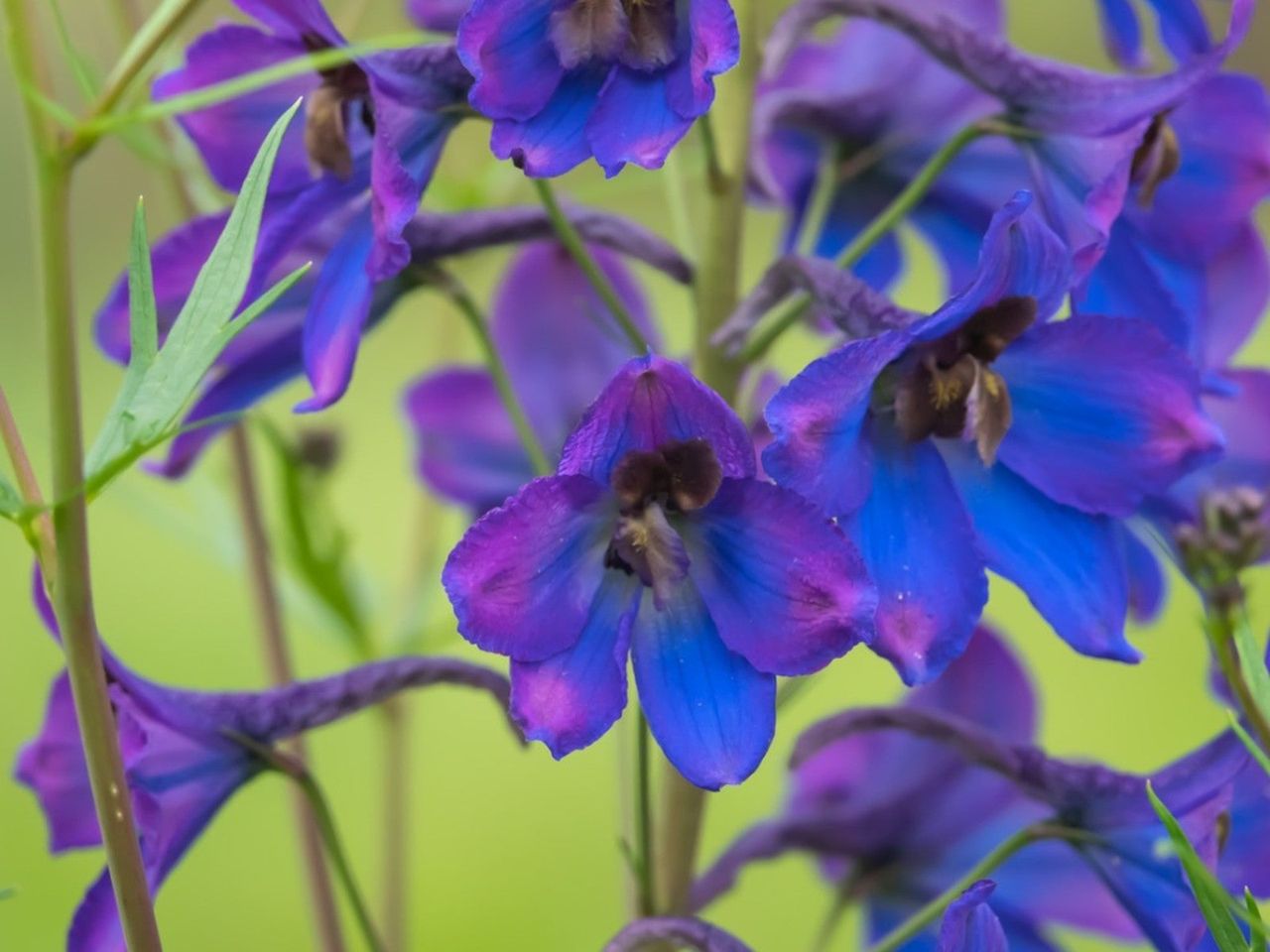Iridescent Plants That Will Light Up Your Garden


Are you looking to add a little shimmer to the garden? Plants with iridescent fruit, flowers or leaves might do the trick. These shiny plants have special adaptations to help them attract pollinators or capture more sunlight. Iridescent plants can also catch the human eye and add visual attraction to flowerbeds and houseplant displays.
Plants with Iridescent Foliage
Iridescence in nature is not uncommon. Japanese beetles are a prime example. These shimmering bugs have bluish-green and coppery exoskeletons that seem to shift color as the angle of light changes. Scientists aren't totally sure why some bugs and birds have iridescent coloration. Perhaps, it evolved as a way to attract mates or distract predators.
However, scientists have learned how iridescent foliage benefits plants. Most species with iridescent leaves live in low light environments, such as tropical rainforests. The leaves of these iridescent plants have special crystal-like structure that reflect blue light. This allows the plant to absorb more of the red and green wavelengths needed for photosynthesis.
Not surprising, when these same species of plants receive more sunlight, they lose their iridescent qualities. If you're considering one of these plants with iridescent foliage, experiment with light levels to bring out the maximum shimmer:
- Blue Oil Fern (Microsorum thailandicum) – The long, spear-shaped leaves of this iridescent plant may seem plain for a fern, but the metallic foliage makes the Blue Oil Fern a sought-after species. These slow-growing, southeast Asia natives are a bit pricey, but they make attractive houseplants in high humidity rooms.
- Elaphoglossum metallicum – This iridescent fern species from Peru is similar in appearance to the Blue Oil Fern and just as pricey. E. metallicum needs high humidity and room to grow as the fronds can reach 18 to 24 inches (46-61 cm.).
- Peacock Begonia (Begonia pavonina) – A cool-weather species from Malaysia, the leaves of the Peacock begonia have a metallic blue shimmer when the light hits the foliage at certain angles. Although not the main feature of this plant, this begonia produces lovely pink and white flowers.
- Peacock Fern (Selaginella uncinata) – Even though the foliage of this iridescent plant is fern-like in appearance, the Peacock fern is classified as a moss. Native to China, it's a tropical species that does well in low-light, humid environments.
- Persian Shield (Strobilanthes dyerianus) – This purple iridescent plant is only hardy in USDA zone 10, but can be grown as an annual in cooler climates. Unlike most iridescent foliage plants, Persian Shield prefers full sun locations.
Plants with an Iridescent Flower
Although iridescence in flowers is not highly visible to the human eye, studies have demonstrated bees react positively to flower-like iridescence. Even though humans may not be able to appreciate the shimmer, planting these flowers can attract more pollinators to the garden:
- Black Bat Flower (Tacca chantrieri) – As the name suggests, the black flower of this exotic orchid resembles a bat in flight. The Black Bat flower is hardy in USDA zones 9-11.
- Blue Sea Holly (Eryngium planum) Deadheading keeps the silvery-violet flowers of this sun-loving plant blooming all summer long. Blue Sea Holly is hardy in USDA zones 4 -10.
- Flower-of-an-hour (Hibiscus Trionum) Commonly called Venice Mallow, the creamy white flowers of this Old World species only remain open for a few hours. Flower-of-an-hour prefers full sun and can be grown as an annual outside its USDA hardiness zones 9-11.
Plants That Produce an Iridescent Berry
It's well known that some birds are attracted to shiny items like coins and jewelry. It's believed that iridescence in fruit is an adaptive measure aimed at increasing the area in which a plant's seeds are dispersed by birds. Nonetheless, here are two plants which produce beautiful shimmering fruit:
- Harlequin Glorybower (Clerodendrum trichotomum) – Only hardy in USDA zones 7-10, Harlequin Glory-Bower is a deciduous shrub which produces black pearlesque berries surrounded by a red calyx.
- Marble Berry (Pollia condensata) – Best kept as a houseplant, Marble Berry is a tropical perennial which grows 36 inches (91 cm.) tall and produces clusters of brilliant iridescent berries.
Gardening tips, videos, info and more delivered right to your inbox!
Sign up for the Gardening Know How newsletter today and receive a free copy of our e-book "How to Grow Delicious Tomatoes".

Laura Miller has been gardening all her life. Holding a degree in Biology, Nutrition, and Agriculture, Laura's area of expertise is vegetables, herbs, and all things edible. She lives in Ohio.